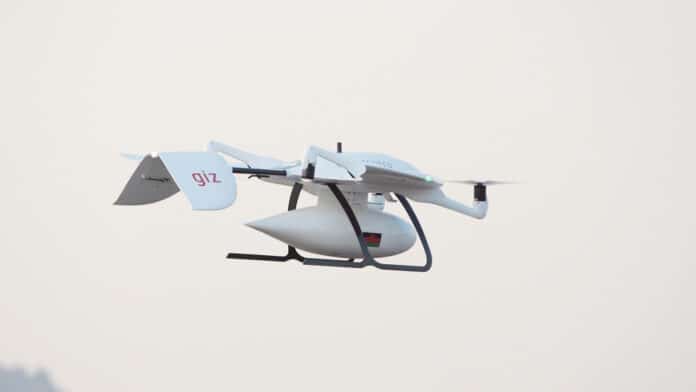Drones are operating increasingly in areas out of sight of the person controlling them. However, conventional remote controls have limited range, making them unsuitable for these flights. On the other hand, simple mobile network-based systems have so far been unable to guarantee a reliable connection when mobile network loads are high or where there is a lack of network coverage.
Now, researchers at Fraunhofer HHI have joined forces with partners in the SUCOM project to develop a new mobile network system that can be used to control drones even over long distances and over difficult terrain.
The project partners include Wingcopter, the Hessian drone manufacturer, Emqopter GmbH, and CiS GmbH.
The drone stays connected even if the data rate fluctuates. Safety-critical information required for the creation of aerial photographs, such as position, altitude, flight direction, speed, and other data, can be transmitted without interruption – a key prerequisite for the high safety requirements in aviation.
“For comparison, we equipped a drone with a commercially available LTE system and with our SUCOM mobile network module, which has the new communication protocols,” says Tom Piechotta, a scientist at Fraunhofer HHI. “While the connection that used the conventional module kept dropping out, the SUCOM module provided a stable connection. Thanks to our new protocols, the connection is so stable that there are no interruptions.” For the researcher, this is a clear indication that a lack of network coverage does not solely cause disruptions in drones.
To demonstrate this, the project team flew over a large forest area in northern Brandenburg, one of Germany’s largest network dead spots, with a diameter of 14 km (9 miles). Thanks to the SUCOM module, the drones did not lose connection at any point during the flight.
The technology is already being used in Malawi. Drones equipped with the new module deliver medicines, blood supplies, and other vital materials to the population during the rainy season, covering distances of up to 40 km (25 miles). In the event that the cellular connection does fail, the drone is also equipped with satellite technology.
